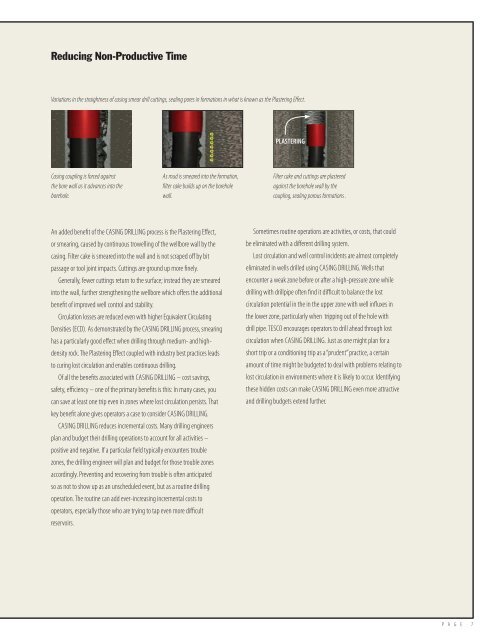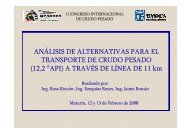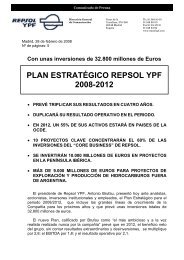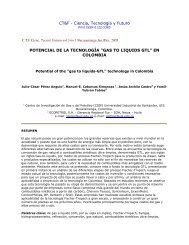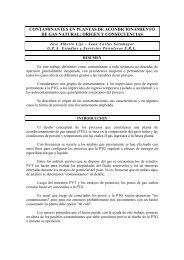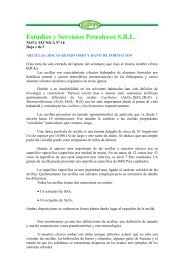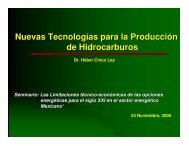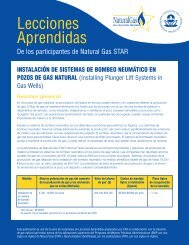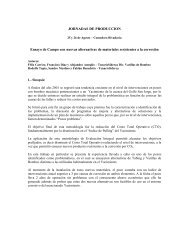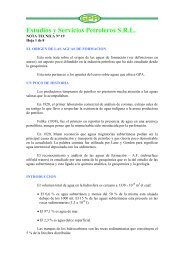tesco casing drilling - OilProduction.net
tesco casing drilling - OilProduction.net
tesco casing drilling - OilProduction.net
Create successful ePaper yourself
Turn your PDF publications into a flip-book with our unique Google optimized e-Paper software.
Reducing Non-Productive Time<br />
Variations in the straightness of <strong>casing</strong> smear drill cuttings, sealing pores in formations in what is known as the Plastering Eff e c t .<br />
PLASTERING<br />
Casing coupling is forced against<br />
the bore wall as it advances into the<br />
borehole.<br />
As mud is smeared into the formation,<br />
filter cake builds up on the borehole<br />
wall.<br />
Filter cake and cuttings are plastered<br />
against the borehole wall by the<br />
coupling, sealing porous formations .<br />
An added benefit of the CASING DRILLING process is the Plastering Effect,<br />
or smearing, caused by continuous trowelling of the wellbore wall by the<br />
<strong>casing</strong>. Filter cake is smeared into the wall and is not scraped off by bit<br />
passage or tool joint impacts. Cuttings are ground up more finely.<br />
Generally, fewer cuttings return to the surface; instead they are smeared<br />
into the wall, further strengthening the wellbore which offers the additional<br />
benefit of improved well control and stability.<br />
Circulation losses are reduced even with higher Equivalent Circulating<br />
Densities (ECD). As demonstrated by the CASING DRILLING process, smearing<br />
has a particularly good effect when <strong>drilling</strong> through medium- and highdensity<br />
rock. The Plastering Effect coupled with industry best practices leads<br />
to curing lost circulation and enables continuous <strong>drilling</strong>.<br />
Of all the benefits associated with CASING DRILLING – cost savings,<br />
safety, efficiency – one of the primary benefits is this: In many cases, you<br />
can save at least one trip even in zones where lost circulation persists. That<br />
key benefit alone gives operators a case to consider CASING DRILLING.<br />
CASING DRILLING reduces incremental costs. Many <strong>drilling</strong> engineers<br />
plan and budget their <strong>drilling</strong> operations to account for all activities –<br />
positive and negative. If a particular field typically encounters trouble<br />
zones, the <strong>drilling</strong> engineer will plan and budget for those trouble zones<br />
accordingly. Preventing and recovering from trouble is often anticipated<br />
so as not to show up as an unscheduled event, but as a routine <strong>drilling</strong><br />
operation. The routine can add ever-increasing incremental costs to<br />
operators, especially those who are trying to tap even more difficult<br />
reservoirs.<br />
Sometimes routine operations are activities, or costs, that could<br />
be eliminated with a different <strong>drilling</strong> system.<br />
Lost circulation and well control incidents are almost completely<br />
eliminated in wells drilled using CASING DRILLING. Wells that<br />
encounter a weak zone before or after a high-pressure zone while<br />
<strong>drilling</strong> with drillpipe often find it difficult to balance the lost<br />
circulation potential in the in the upper zone with well influxes in<br />
the lower zone, particularly when tripping out of the hole with<br />
drill pipe. TESCO encourages operators to drill ahead through lost<br />
circulation when CASING DRILLING. Just as one might plan for a<br />
short trip or a conditioning trip as a “prudent” practice, a certain<br />
amount of time might be budgeted to deal with problems relating to<br />
lost circulation in environments where it is likely to occur. Identifying<br />
these hidden costs can make CASING DRILLING even more attractive<br />
and <strong>drilling</strong> budgets extend further.<br />
P A G E 7


